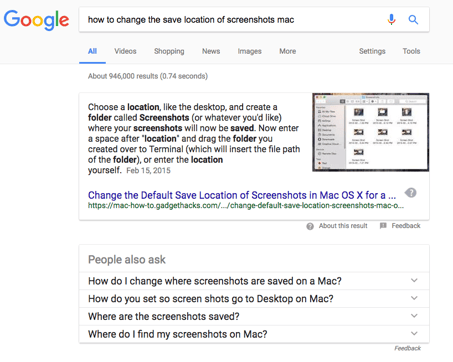The rapidly evolving search engine landscape, as well as a huge shift in the way that people are discovering content, has changed the way marketers develop their content.
Even with these changes one of the main complaints out there is: "We create great content but we still don’t seem to rank high in Google for our target keywords."
As a response to this a lot of marketers will respond with increased content output. Unfortunately, creating larger volumes of the same underperforming content will often result in the same underwhelming results -- just at a greater expense.
Search Engines Are Changing . . . Are You?
Updates to the way that the search engines are processing and evaluating content have been tied heavily to the approaches that content publishers have been taking to get results.
1. Keyword Rankings Are Not So Straightforward
Content producers evaluate the performance of content by looking at keyword rankings within the search engines. However, is this metric really credible? How can it be when rank changes depending on context. In other words, depending on how and where you’re searching from, you’ll see different search results.

A simple search for the term, “where to buy cake” illustrates this perfectly. If you’re searching for this query from Millburn, NJ then you’ll receive a completely different set results compared to someone searching in San Francisco. In fact, the results page for this query probably has thousands of different variations at any one moment in time. So, how do you accurately determine your ranking for this keyword?
Are you using Topic Clusters? Learn more here.
2. Fitting Content Into Snippets
Outside of keyword ranking problems, the search engines have also been dictating how content should be structured, most notably with the increased appearance of featured snippets.

Google has been rolling out more and more featured snippets within the search results that try to answer the question that the searcher has without needing to navigate through to the content.
The reality is that content ranking within the featured snippet section often gets a much greater share of the traffic for the given query when compared to non-featured snippet search engine result pages (SERPs). Publishers now have to restructure their content to try and appear within these featured snippets.
3. Machine Learning and Intent
Google in particular has been making big investments in machine learning and has introduced ‘RankBrain’ into the core algorithm it uses to index and rank content. RankBrain enables Google to better understand the intent behind specific queries without the search query explicitly stating them -- all with the goal of providing more relevant results to the searcher.
4. It's About the Searcher
More significant than the way in which the search engines themselves are evolving is the way that the searcher is communicating with the search engines.
Amplified by the rise of mobile and voice search, queries have become more and more conversational. Google’s updates over the past 2-3 years have focused on understanding these types of queries better through natural language processing, most notably with the rollout of Hummingbird.
Google’s CEO, Sundar Pichai, announced in May 2016 that that 20% of queries on its mobile app and on Android devices are voice searches.
The takeaway here for marketers? The traditional view of ‘keywords’ in search has changed. Where there were maybe 10-20 ‘big keywords’ that would be sought after for ranking within a topic, there are now hundreds or thousands of long-tail variations that are regularly searched within a topic.
What's The New Strategy?
Building content within Topic Clusters is part of the new strategy marketing companies are using with clients to capture a large amount of search traffic across an ever-increasing pool of relevant keywords/phrases, as well as creating a strong affinity of a topic against a brand.
The basic premise behind building a content program in topic clusters is to enable a deeper coverage across a range of core topic areas, while creating an efficient information architecture in the process.
What this all works towards is ensuring that you’re actually creating content that people want to see, as opposed to content that’s designed specifically for the search engines. Search engines are pretty smart. In most cases, they don’t require you to ever mention a specific keyword in the copy of your content to understand that it’s relevant.
Shifting your focus to building content on a keyword-by-keyword basis and moving to owning topics is going to help you create better content, increase your visibility in the search engines and provide a much more positive experience for visitors.
Look for an upcoming post where we go into more detail about Topic Clusters and the processes to create them. Or, in the meantime, contact us now for a free consult about re-shaping your content strategy.






